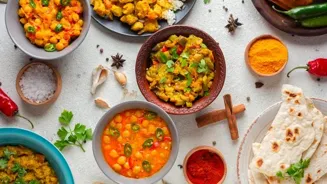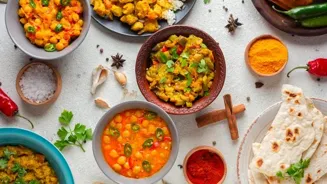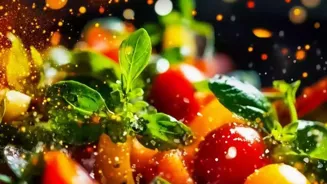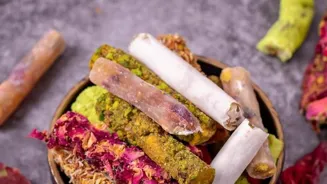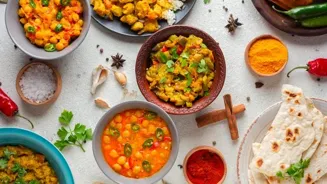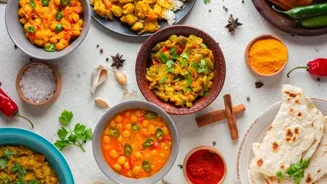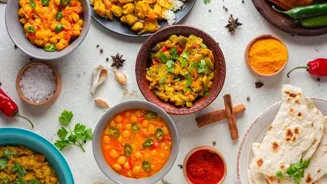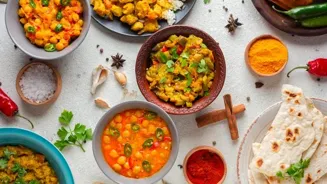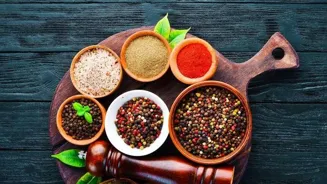Unveiling the Cultural Magic of Indian Spice Blends: Dive into a world where flavors tell stories
India, the land of vibrant colors and diverse traditions, boasts a cuisine as rich and complex as its history.
At the heart of this culinary tapestry lies the masterful use of spice blends, often referred to as "masalas.
" These aromatic concoctions are not merely ingredients; they are integral to the cultural identity of India, reflecting regional variations, family legacies, and age-old Ayurvedic principles.
The art of creating the perfect masala is a skill passed down through generations, a closely guarded secret that defines the unique flavors found in every Indian home.
From the fiery depths of a Rajasthani Laal Maas (vegetarian version, with root vegetables) to the subtle sweetness of a Gujarati dal, the magic truly lies in the blend.
Origin of Indian spice blends from ancient times, evolving with regional variations
The origin of spice blends in India can be traced back thousands of years, possibly to the Indus Valley Civilization. Spices like turmeric, cardamom, and pepper were highly valued, not only for their flavor-enhancing properties, but also for their medicinal benefits as described in Ayurvedic texts.
These ancient blends were created using a mortar and pestle, each ingredient carefully measured and ground to release its potent aroma. The knowledge of which spices complemented each other and how they affected the body's balance was considered a sacred art.
Over time, different regions of India developed their own unique spice blends, incorporating locally available ingredients and catering to local preferences.
The Silk Route played a significant role in introducing new spices like cumin, coriander, and cloves, which were quickly adopted into Indian cuisine.
Regional Indian spice blends vary widely, reflecting local ingredients and traditions
The regional variations in Indian spice blends are truly astounding. In the north, garam masala reigns supreme, a warm and fragrant blend typically containing cardamom, cinnamon, cloves, peppercorns, and cumin. This blend is often added at the end of cooking to add a final flourish of flavor.
Further east, in Bengal, panch phoron is a popular mix of five whole spices: fenugreek, nigella, cumin, mustard, and fennel seeds. This blend is usually tempered in oil before other ingredients are added to the dish.
Moving down south, sambar powder and rasam powder are essential ingredients in South Indian cuisine, lending their distinct tangy and aromatic notes to these iconic lentil-based dishes.
Each region's unique climate, availability of ingredients, and culinary history have shaped their distinctive spice blends, creating a symphony of flavors across the Indian subcontinent with subtle variations.
Spice blends in Indian culture symbolize family heritage and unity
Spice blends are deeply woven into the cultural fabric of Indian society. Traditional Indian families often have their own secret recipes for masalas, passed down through generations. These ancestral recipes are not only culinary treasures but also symbols of family identity and heritage.
The preparation of spice blends is often a communal activity, with family members gathering together to clean, roast, and grind the spices in a mortar and pestle. The aroma of roasting spices fills the air, creating a sense of warmth and togetherness.
This tradition reinforces family bonds and ensures that culinary knowledge is preserved and passed on to future generations.
Furthermore, the ritualistic use of spices is closely linked to religious festivals and ceremonies, where specific spice blends are used to prepare auspicious dishes offered to deities as a gesture of faith and cultural preservation.
Ayurvedic spice blends balance doshas for holistic health
Beyond flavor, spice blends play a vital role in Ayurvedic medicine, an ancient Indian system of healing. Spices are considered to have medicinal properties that can help balance the body's three doshas: Vata, Pitta, and Kapha.
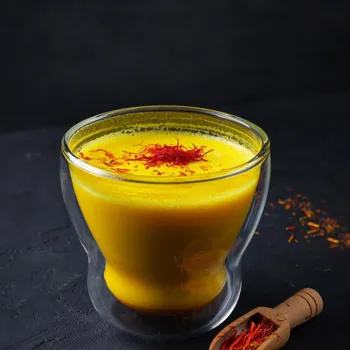
Turmeric, for instance, is known for its anti-inflammatory and antioxidant properties, while ginger is believed to aid digestion. Cumin is thought to have cooling properties, while black pepper is considered warming.
The careful selection and combination of spices in a blend can create a harmonious balance that promotes overall health and well-being. Many Indian households rely on spices as natural remedies for common ailments, using them in teas, decoctions, and other home remedies.
This link between spice blends and Ayurveda underscores their significance not only as culinary ingredients but also as tools for maintaining health and promoting holistic wellness, thus extending to the medicinal and holistic lifestyle.
Global appreciation of Indian spices revolutionizes culinary landscape
The global popularity of Indian cuisine has led to a greater understanding and appreciation of spice blends worldwide. Chefs and home cooks alike are experimenting with Indian spices, incorporating them into their own dishes to add unique flavor profiles.
Ready-made spice blends are easily available in most supermarkets, making it easier for people to recreate authentic Indian dishes at home.
However, many chefs and food enthusiasts still prefer to create their own spice blends, knowing that the flavor of freshly ground spices is far superior to pre-packaged versions. The demand for authentic Indian spices has also driven the growth of spice farms and cooperatives.
The increasing global recognition of Indian spices has not only boosted the spice industry but also raised awareness of India's rich culinary heritage. The blend of global cuisines and cultures makes Indian spices a universally recognised source of flavour.
AI Generated Content. Glance/InMobi shall have no liability for the content